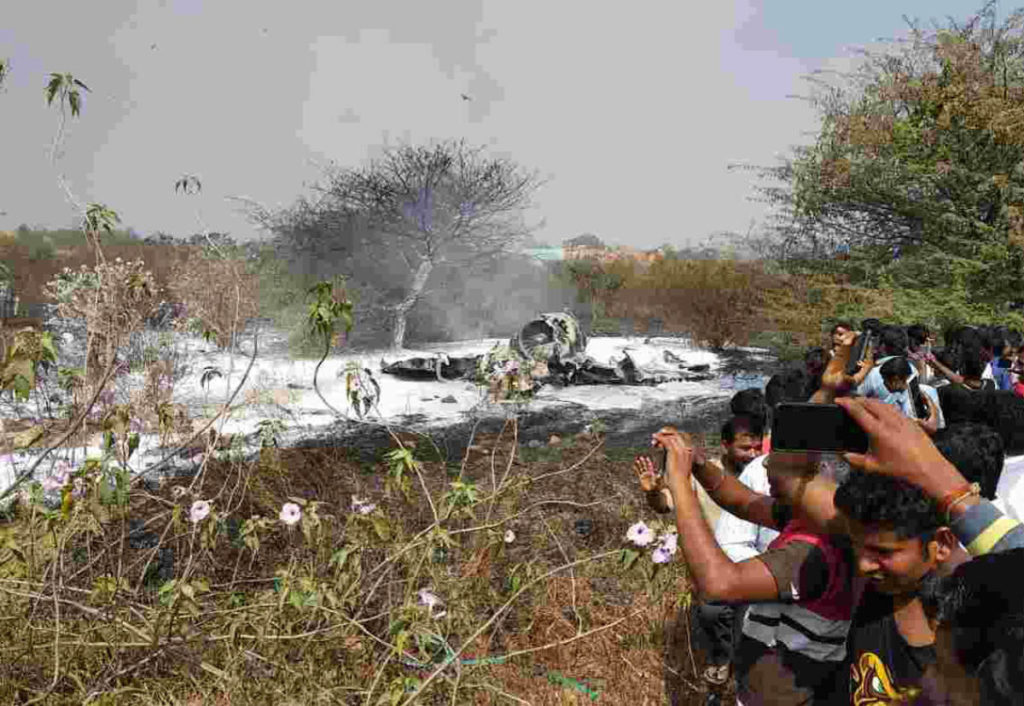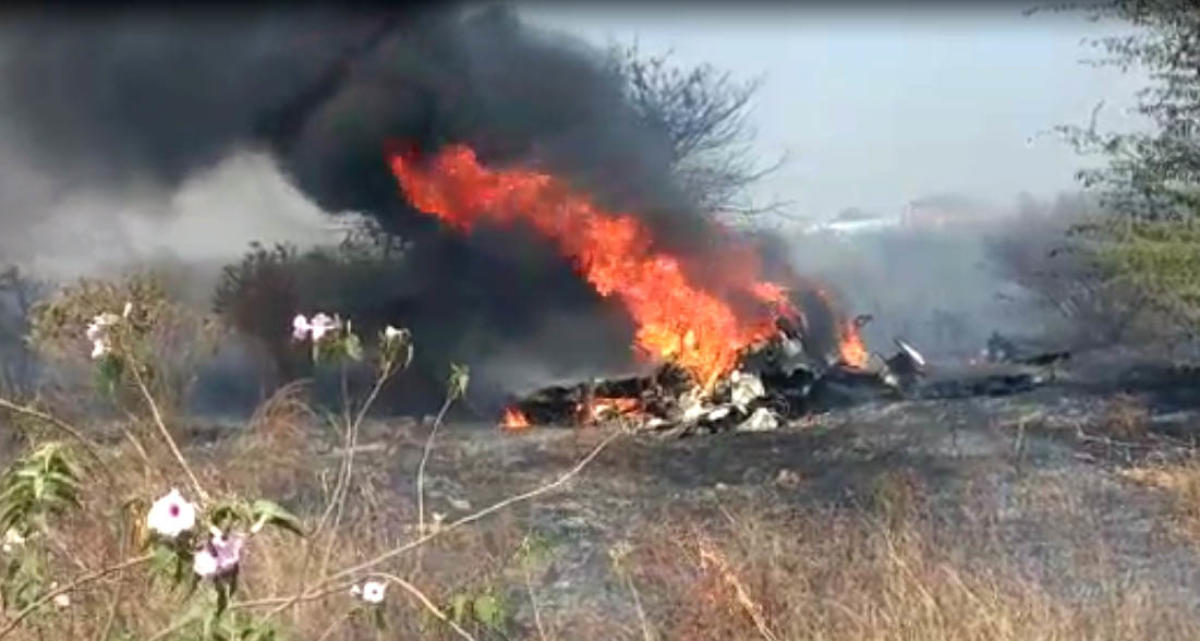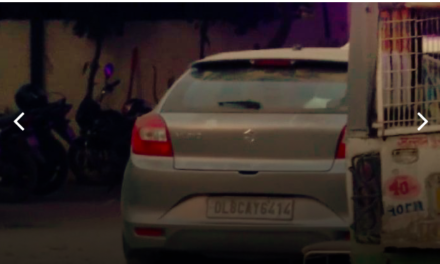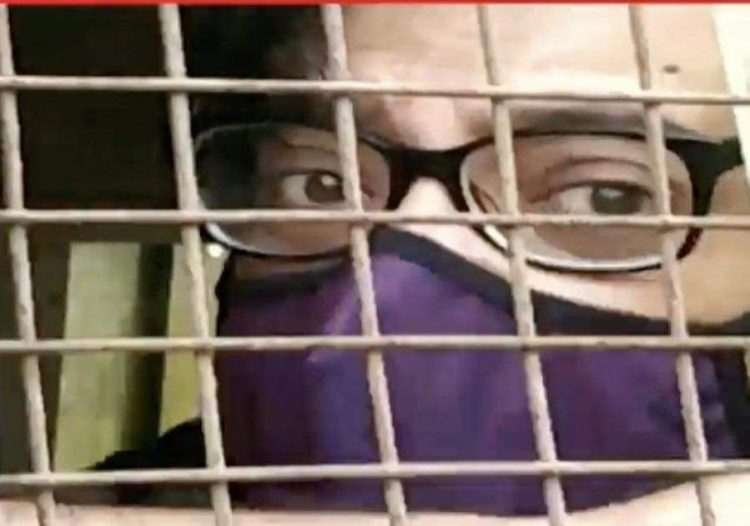Eyewitness to the entire episode, the IAF personnel had seen the aircraft’s tyre wobble and come off, its metal edge hitting the runway at high speed. Seconds before take-off, the friction had sparked a fire that quickly engulfed the aircraft. Sensing big trouble, the two pilots had to be quick, real fast.
They made one final contact with the Air Traffic Control (ATC) and ejected out, aborting take-off. But as the thick smoke and soaring flames from the aircraft trapped their ascent in chaos, the parachutes caught fire. Within minutes, they descended, one of them falling extremely close to the burning aircraft. The two died later, succumbing to severe burns.
An Indian Air Force (IAF) personnel, who preferred anonymity, and the locals who rushed to the spot were clear the pilots saved a thousand lives.
If the pilots had opted to take off and eject from a higher altitude, the flight would have gained height and crashed on the thickly populated area just ahead of the runway.

Here’s one reason why the aircraft’s crash inside the airport compound averted a major disaster.
Just outside the Eastern end of the airport wall, the Kariyammana Agrahara Road leading to a tech park and Yemalur village beyond was packed with peak-hour traffic.
So was the Old Airport Road and the crowded Marathahalli area. Barely 500 metres away, along the flight path lay the thickly populated Manjunatha Layout with the Trinity English High School, the Kaveri Gnana Mithra School and the MVJ International School in close proximity.
Just ahead was the Outer Ring Road, flanked by thousands of households in Chandra Layout and Rajashree Layout.
Telltale signs of the aborted take-off were everywhere inside the airport’s perimeter boundary. Charred bushes and fire triggered by remnants of the aviation fuel told the story.
Hundreds of employees from the nearby tech park who flocked to the crash site had one troubling thought: How big a disaster it would have been if the flight had taken off









